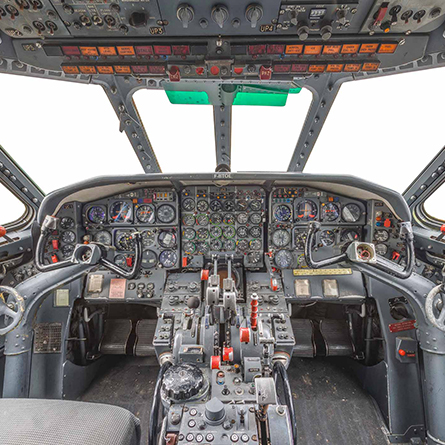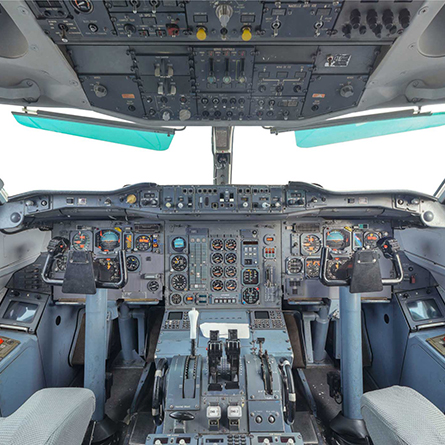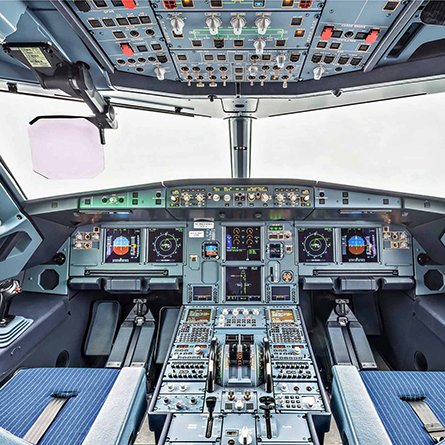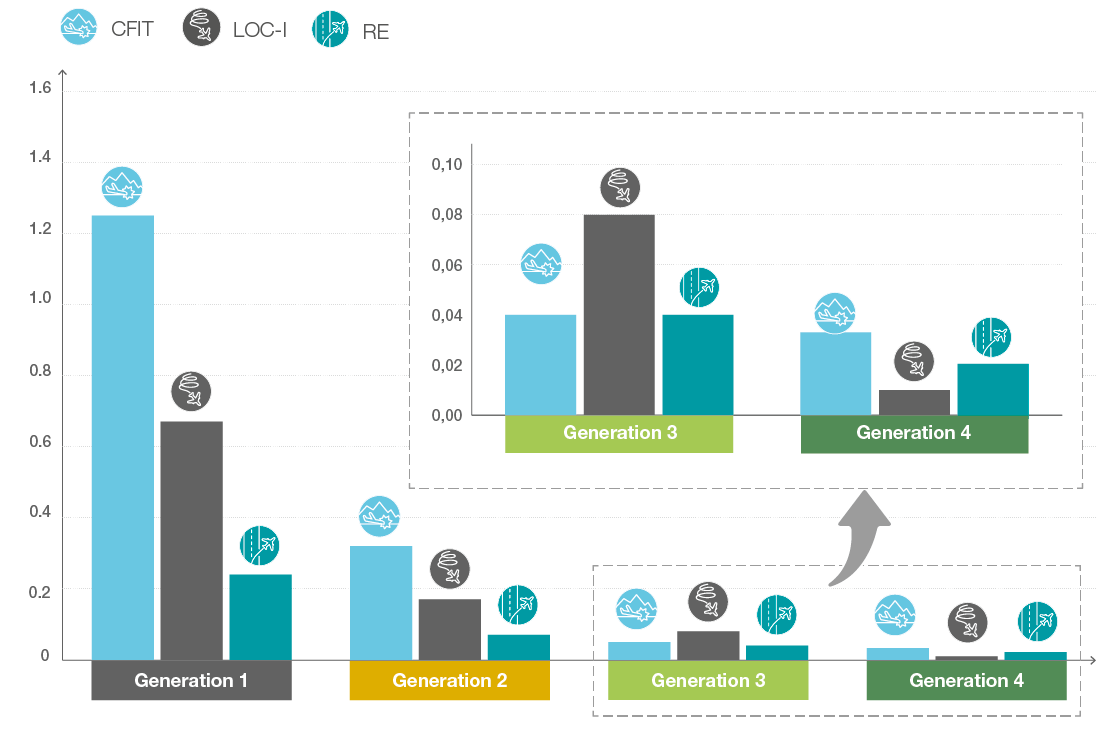Generations of Jet
Evolution of Commercial Jet Aircraft

Early Commercial Jets
From 1952
Dials and gauges in cockpit, early autoflight systems
Comet, Caravelle, BAC-111, Trident, VC-10, B707, B720, DC-8, Convair 880/990

More Integrated Autoflight
From 1964
More elaborate autopilot and autothrottle systems
Concorde, A300, Mercure, F28, BAe146, VFW 614, B727, B737-100/-200, B747-100/-200/-300/SP, L-1011, DC-9, DC-10

Glass Cockpit, FMS & TAWS
From 1980
Electronic displays, Flight Management System (FMS), and Terrain Awareness and Warning System (TAWS) reduced CFIT accidents
A300-600, A310, Avro RJ, F70, F100, B717, B737 Classic, B737 NG, B737 MAX, B757, B767, B747- 400/-8, Bombardier CRJ, Embraer ERJ, MD-11, MD-80, MD-90

Fly-By-Wire
From 1988
Flight envelope protection enabled by fly-by-wire technology reduced LOC-I accidents
A220, A318/A319/A320/A321, A330, A340, A350, A380, B777, B787, Comac C919, Embraer E-Jets, Sukhoi Superjet
The Four Generations of Commercial Jet Aircraft infographic is available for download:
The continual reduction in accident rates has been achieved by an ongoing commitment of the commercial aviation industry to enable a safe aircraft to be safely operated in a safe air transport system. A notable part of this success is due to effective regulation, a strong safety culture, and improvements in training. Technological advances are also a crucial enabler for enhancing the level of safety. In particular, technologies introduced in aircraft systems intentionally evolved with improving safety as their aim.
The first generation of commercial jet aircraft were designed in the 1950s and ‘60s with system technologies, which were limited in their capabilities by the analog electronics of that era. A second generation of aircraft quickly appeared with improved autoflight systems.
The third generation of aircraft was introduced in the early 1980s. This generation took advantage of digital technologies to introduce glass cockpits with flight management systems and navigation displays, which significantly improved navigation capabilities and position awareness. Combined with the Terrain Awareness and Warning System (TAWS), these evolutions were key to reducing Controlled Flight Into Terrain (CFIT) accidents.
The fourth and latest generation of commercial jet aircraft first entered into service in 1988 with the Airbus A320. Fourth-generation aircraft use fly-by-wire technology with flight envelope protection functions. These functions protect against Loss Of Control In-flight (LOC-I) accidents. Fly-by-wire technology is now the industry standard and it is used on every currently produced Airbus model, Boeing B777 and B787, Comac C919, Embraer E-Jets, and the Sukhoi Superjet.
How technology helped reduce accidents
Statistics over the life of each aircraft generation show a significant improvement in the level of safety, notably since the introduction of generation 3 aircraft, further enhanced by the latest generation 4 aircraft.
Comparison of accident rates by generation of aircraft provides a clear illustration of the value of commercial aviation industry investments in technology to improve safety.
The introduction of the Flight Management System (FMS), improved navigation displays, and the Terrain Awareness and Warning System (TAWS) with generation 3 aircraft significantly reduced the number of CFIT fatal accidents when compared to the previous generation 1 and generation 2 aircraft.
The benefits of fly-by-wire technologies and energy management systems, which were first introduced on generation 4 aircraft, show a lower rate of LOC-I and RE accidents when compared with the previous generation 3 aircraft.
More detailed analysis of the influence of these technologies on reducing the accident rate is introduced here.
Fatal accident rate (per million flights) per aircraft generation 1958-2023
No Data Found
Hull loss accident rate (per million flights) per aircraft generation 1958-2023
No Data Found
Yearly number of flights by aircraft generation
Airbus aircraft flew 79% of the flights made by generation 4 commercial jet aircraft in 2023
There were more than 32 million flight departures in 2023. Around 19 million flights were made by generation 4 jets, almost 15 million of which were Airbus aircraft.
The largest percentage of flights in recent years were made using the latest generation 4 commercial jets, which have the lowest accident rate. As the percentage increases over the next decade, this should help to sustain further decreases in the overall accident rate for commercial air transport.
Yearly number of flights per aircraft generation (in millions)
No Data Found
No Data Found



